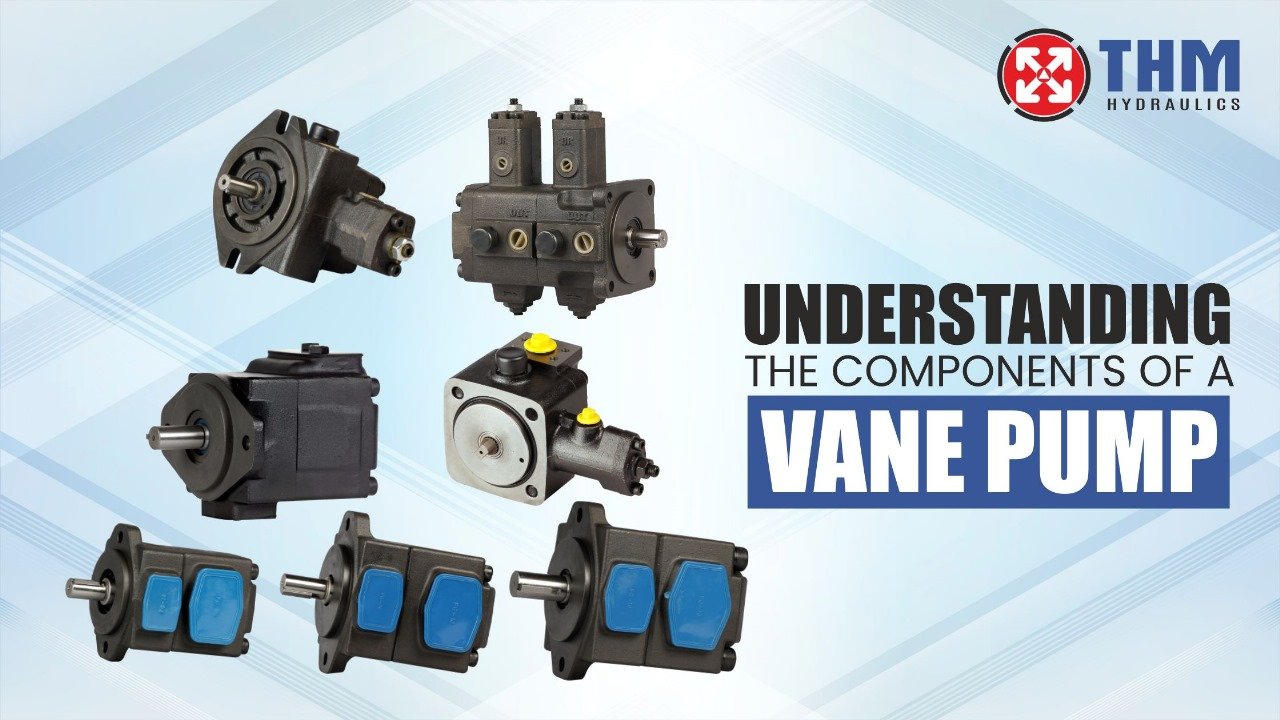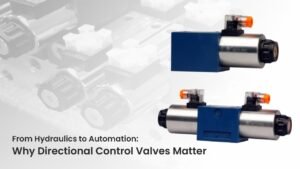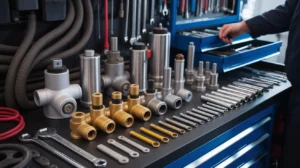The vane pump stands as an essential hydraulic and industrial machinery component because of its reliable performance and wide operational range. The multi-sector industry implements these pumps to produce continuous fluid delivery despite fluctuating pressure requirements.
This article examines the essential elements of hydraulic vane pumps followed by their operational mechanism and various types alongside their applications and their distinction from gear pumps.
Vane Pump Working Principle
A vane pump functions through an easy yet efficient process that includes the following steps:
- 1. The pump contains a rotor that features slots which accept extendable vanes as its main components.
- 2. An off-center (eccentric) housing position of the rotor generates changing volume chambers during rotor rotation.
- 3. Fluid movement occurs when the rotor spins because centrifugal force extends the vanes which trap fluid before moving it toward the outlet.
- 4. Stamping motion of vanes inside the pump ensures both regular flow speeds and minimal pulsatile pressure that makes them suitable for applications requiring precise flow management.

Key Components of a Vane Pump
A hydraulic vane pump works through the following main components:
1. Rotor
The rotating heart element operates at high speed to create suction and fluid transport.
The slots of the rotor hold the vanes in position while enabling their movement through the slots for required operations.
2. Vaned Elements
The extendable blades of the vane pump operate inside the rotor slots.
The movement of these elements establishes differences in pressure which drives fluid intake and discharge.
3. Casing
The pump’s outer shell acts as structure while it supports all interior components.
The bore of this design has an eccentric shape to enable vane movement.
4. Inlet and Outlet Ports
The suction port functions to draw fluid into the pump while the discharge port operates to push fluid out with generated pressure.
The pump needs proper sealing methods to stop leakage and maintain its operational efficiency.
5. Bearings and Shaft
The rotating shaft achieves reduced friction and wear through the support of bearings.
The shaft operates more smoothly with longer lifespan when properly lubricated.
Vane Pump Types
There are several vane pump types:
- THM – HVP – Variable Displacement Vane Pump
- THM – T7D – Fixed Displacement Vane Pump
- THM – T6C – Fixed Displacement Vane Pump
- THM – PV2R5 – Fixed Displacement Vane Pump (Large Flow)
- THM – VDN – Variable Displacement Vane Pump
- THM – TVCM – Variable Displacement Vane pump
Vane Pump Uses
Vane pumps serve numerous industries since they serve the purpose of efficiently handling many types of fluids. The following applications characterize vane pump usage:
✔The automotive sector utilizes vane pumps to power steering systems and for fuel injection and transmission systems.
✔The vane pump serves industrial machinery through its functions for oil circulation and cooling systems and lubrication.
✔ Medical Equipment: Precision fluid handling in dialysis machines and laboratory instruments.
✔ Petroleum and Chemical Industries: Fuel transfer, solvent circulation, and chemical processing.
Vane Pump vs Gear Pump: Which One to Choose?
The hydraulic system implementation depends on whether you choose a vane pump or a gear pump because each offers unique advantages for particular applications.
Features:-
Gear Pump –
- Efficiency – Higher due to lower internal leakage
- Pulsation – Low (steady flow)
- Maintenance – Requires regular vane replacement
The vane pump produces less noise while gear pumps generate louder sounds because of their gear meshing operation.
Vane Pump –
- Efficiency – Moderate efficiency
- Maintenance – Less frequent maintenance
- Pulsation – Slight pulsation
The vane pump works best in applications that need smooth precise flow and high-pressure applications that require robust construction.
Conclusion
The selection process for appropriate vane pump models requires complete knowledge of their fundamental components. Your operational needs determine which choice between rotary vane pumps and vane pumps versus gear pumps will be most suitable for your application.
The THM–Vane pumps are the ultimate choice for those who require high performance, energy efficiency, and durability. THM Huade Hydraulics is your one-stop hydraulic solution provider and we guarantee you nothing but the best hydraulic solutions.



